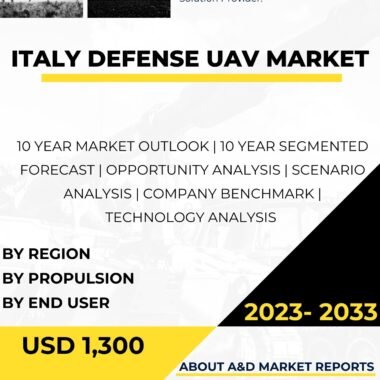Description
The Netherlands Defense Training and Simulator market has experienced significant growth and development, reflecting the country’s commitment to leveraging cutting-edge training and simulation technologies to enhance its defense capabilities. Training and simulation systems play a crucial role in preparing military personnel for a wide range of scenarios and challenges they may encounter during operations. As a technologically advanced nation with a strong defense industry, the Netherlands recognizes the strategic importance of effective and immersive training in ensuring the readiness and effectiveness of its defense forces.
One of the primary applications of training and simulation in the Netherlands Defense market is in military training. Simulation and virtual training systems offer a safe, cost-effective, and realistic environment for training military personnel in various domains, including ground operations, air combat, naval maneuvers, and cybersecurity. These systems replicate real-world scenarios, enabling troops to practice and refine their skills without the risks associated with live training exercises. Whether it’s infantry units conducting urban warfare exercises or fighter pilots engaging in aerial dogfights, simulation-based training enhances readiness, improves decision-making, and fosters collaboration across the entire spectrum of military operations.
Moreover, the Netherlands Defense Training and Simulator market address the requirements of joint and coalition training. As a member of NATO and other multinational coalitions, the Dutch Armed Forces engage in joint exercises and international operations. Training and simulation systems facilitate joint exercises, enabling troops from different services and allied nations to train together, practice coordination, and enhance their ability to work as a cohesive force in multinational operations. These joint training exercises foster interoperability and strengthen defense cooperation with partner countries.
Additionally, the Dutch Armed Forces rely on training and simulation systems for mission planning and rehearsal. Virtual simulations allow military commanders to evaluate various tactical and strategic options, assess potential outcomes, and optimize their plans before executing real-world missions. Through simulation-based rehearsal, troops can familiarize themselves with mission objectives, potential challenges, and response strategies, improving their preparedness and effectiveness during actual operations.
Furthermore, the Netherlands Defense Training and Simulator market cater to the requirements of research and development. Simulation technologies are instrumental in modeling and testing new defense systems, equipment, and technologies before their deployment. The use of simulators and virtual environments allows defense engineers and scientists to assess the performance and capabilities of new assets, ensuring that they meet the necessary requirements and standards before being fielded.
The Netherlands’ dedication to innovation is evident in the development of cutting-edge training and simulation technologies. The Dutch defense industry actively collaborates with technology companies and research institutions to explore advancements in simulation software, virtual reality (VR), augmented reality (AR), and artificial intelligence (AI). These collaborations drive improvements in simulation realism, fidelity, scenario generation, and system integration, positioning the Netherlands at the forefront of defense training and simulation technology.
The export potential of the Netherlands Defense Training and Simulator market is also significant. The country’s reputation for high-quality defense systems and its expertise in training and simulation technologies have generated interest from other nations seeking to enhance their own defense capabilities. Exporting these advanced training and simulation systems not only supports the Dutch defense industry but also fosters international cooperation and strengthens defense ties with partner countries.
Challenges in the Netherlands Defense Training and Simulator market include the need to address the growing complexity of military operations. As defense operations become more sophisticated and multidimensional, training and simulation systems must be able to replicate and prepare troops for a wide range of scenarios, including cyber warfare, hybrid threats, and asymmetric warfare.
Additionally, the Netherlands Defense Training and Simulator market must focus on cybersecurity measures to protect sensitive training data and simulation environments from potential cyber threats. The use of advanced technologies and digital connectivity in training systems necessitates robust cybersecurity to safeguard against potential breaches and unauthorized access.
Furthermore, the Netherlands Defense Training and Simulator market must consider the challenge of maintaining a balance between simulation realism and cost-effectiveness. While high-fidelity simulators provide an immersive training experience, the cost of these systems must be balanced with training requirements and budget constraints.
In conclusion, the Netherlands Defense Training and Simulator market has witnessed significant growth and development, driven by the country’s commitment to leveraging cutting-edge training and simulation technologies to enhance its defense capabilities. Training and simulation systems play a crucial role in military training, mission planning, decision-making, and research and development for the Dutch Armed Forces. The Netherlands’ focus on training and simulation technology and innovation demonstrates its dedication to providing the highest level of operational readiness and effectiveness for its defense forces. Collaborations with technology companies and research institutions, export opportunities, and a dedication to innovation have positioned the Netherlands as a key player in the global Defense Training and Simulator market. As the Dutch defense industry continues to invest in research and development, advancements in training and simulation technologies will be essential to maintaining the readiness and effectiveness of the Netherlands’ defense capabilities and supporting international security efforts.




